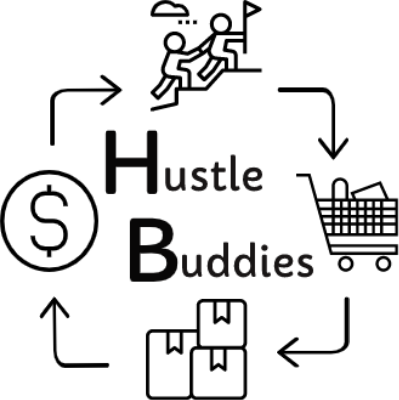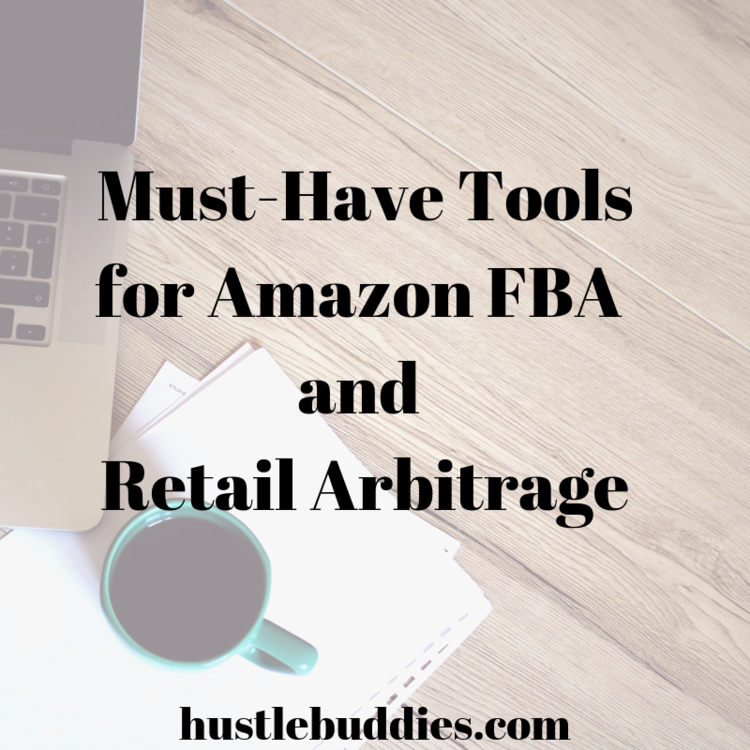Here's the video where we go over which tools we use and recommend for new sellers. Below, you can find links all of the products that we use for our Amazon business.
*As an Amazon Associate I earn from qualifying purchases.
Our Amazon Story: How $100 became $44,000 in sales
Since our first post, we've gotten many requests asking how we personally do this and our experience with it... so here's our story:
We started this just before spring break of 2017 with $100. I (Nate) convinced Alysha to let me try this crazy idea after showing her all my research. I first scanned every item in our house that had a barcode (Books, games, canned food, etc). After getting together a nice little pile of things that made money, I drove to Walmart to spend my $100. And this is what started it all...
We almost quit after 3 weeks because apparently there was something about our account that got it flagged and even though we had sent all of this stuff to Amazon, none of it was listed for sale. Well after Alysha got her angry teacher voice in touch with someone from Amazon we we're finally able to get our account activated. 2 hours later and we had already sold a few items. Within 24 hours we had sold over $100 worth of stuff and had made back our investment.
The idea of "Oh my gosh this actually works!?!?!" was a never ending topic in our house for the next few weeks. For the first 4 months we mostly did Thrifting, Garage Sales and Retail Arbitrage in the clearance sections since this usually has the highest ROI (Return on investment). We wanted to get the most bang for our buck and didn't mind putting in the leg work to find them items.
Because we were both teaching full time, we eventually started to have more budget then we had time to spend (A very weird problem we thought we would never have). At this point we branched out into Online Arbitrage and wholesale (See other post for info about what these are). We also hired some help packing and "de-stickering" products.
We actually grew so fast that we reached a crossroad of deciding if I (Nate) would even continue teaching next year. We were actually earning the same doing FBA as I was teaching. As we continued to learn, we found that by: hiring help to pack, doing more online arbitrage, and making larger purchases in gated categories (for us this was clothing and food), we were able to free up tons of time. We decided that I would continue teaching because...
1) I got offered a job teaching music at Alysha's school!
2) We needed proof of income as we were looking at getting a house.
3) I had plenty of extra time in the day again and really enjoyed the idea of teaching little kids how to sing and act.
As of this post we are still focused on growing our capitol through clearance and online arbitrage. We have moved away from thrifting because of how time consuming it was (but still DEFINITELY recommend it to start). Our Gross sales are hovering around $11,000 per month (and a year to date of $44,000 in sales). Now we don't get to keep all $44,000, but we have around a 30% net profit after fees and our cost of goods. We'll put a snapshot of our dashboard at the end.
We are still learning every day and have definitely made many mistakes. In fact, a few of our first items are still in the warehouse and will soon get hit with a 6 month storage fee if we don't get rid of them.
As always, we just want to share a bit of our story and knowledge and hopefully it helps someone else along the way! There is plenty more that I could say about our story, but this gives you an idea. If you have any questions or you want to hear about any aspect in particular, leave a comment below!
The drop you see happened for a few reasons: End of school tests, concerts, and a 2 week vacation took a big chunk of our time. This is when we hired help so that we could have more time to ourselves. We had to adjust our business model to be less time consuming.
This is what the Amazon Seller App looks like on your phone. As you can see, some days are great and some days are pretty bad, but that's how this is.
Amazon FBA - In a Nutshell
www.monsooninc.com
Notice only the first 2 things are done by You? Amazon handles all the rest... Pretty nice!
For those of you who have Amazon Prime, you already know and love the free two day shipping and no hassle returns. What many don't know is that most of these items aren't actually sold BY Amazon, and are actually 3rd parties listing their item on the Amazon marketplace. These 3rd party sellers will purchase the items and ship them to an Amazon fulfillment center. The item will then sit there until it is purchased, at which point amazon goes and finds the item and ships it off.
Instead of thinking of Amazon as a supplier, think of it as a platform. FBA allows small businesses to sell their goods while letting Amazon handle the logistics of shipping/advertising/fulfillment/etc. By using Amazon's platform, many small business owners have been able to create very profitable (and scale-able) businesses without having to worry about infrastructure.
There are 5 main methods that businesses use to obtain their items to sell. These methods are: Online Arbitrage, Retail Arbitrage, Thrifting, Wholesale, and Private Label.
Online Arbitrage - search for deals online and compare costs to Amazon. Purchase items cheap and resell them on the Amazon platform. This method often utilities coupon stacking and discount gift cards.
Retail Arbitrage - search for deals in physical stores. Purchase items cheap and resell on Amazon's platform. People who use this method will often go to clearance sections with a scanning app to compare prices to Amazon.
Thrifting - Similar to retail arbitrage, but checking thrift and garage sales to find huge discounts on items. This method also uses scanning apps to compare prices to Amazon.
Wholesale - Purchasing directly from the manufacturer/supplier to get wholesale pricing (usually 30-50% off retail). Wholesale accounts almost always require a business license/tax ID to open. While clearance/thrift shopping will have higher margins, Wholesale is scale-able. Once you have your orders, you can continue ordering more every time you run out of stock.
Private Label - This is creating your own brand/item and selling it on the Amazon platform. This method has the highest risk, but also the highest payoff. Typically (not always) products are sourced from China. Start up costs are typically high for this ($1k-$3k) because of high initial order requirements and shipping costs. This method (when successful) is probably the most scale-able and the safest since you own the product and can sell it anywhere you want (thus diversifying off of the Amazon platform).
I'll be explaining more in future posts, but that about sums up what FBA is. If you have any questions or topics you want me to cover regarding FBA, please leave a comment in the section below!






